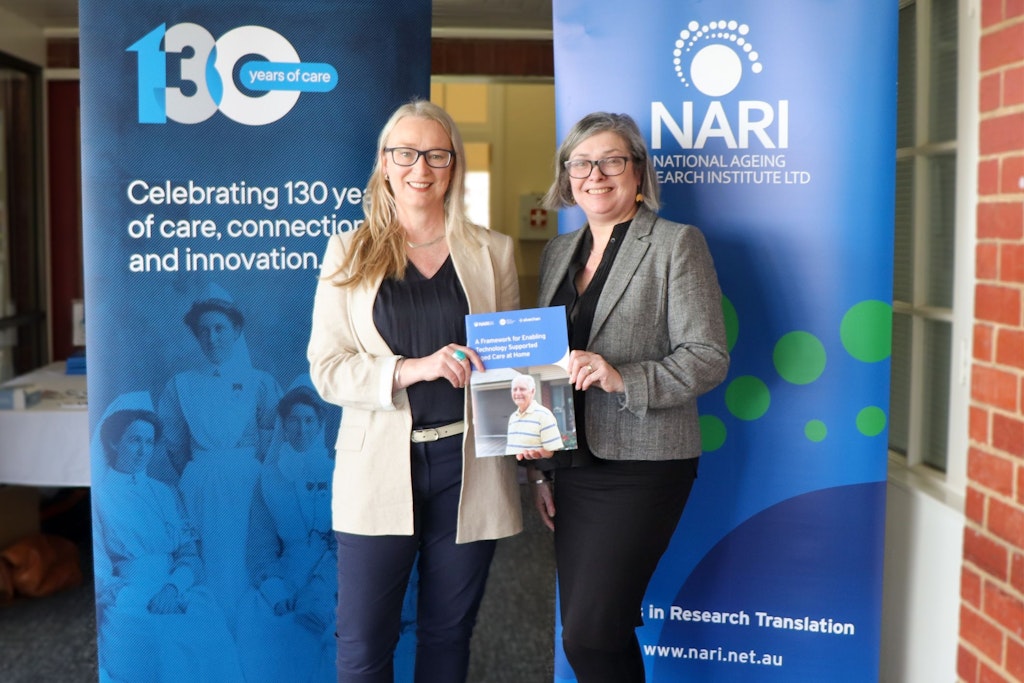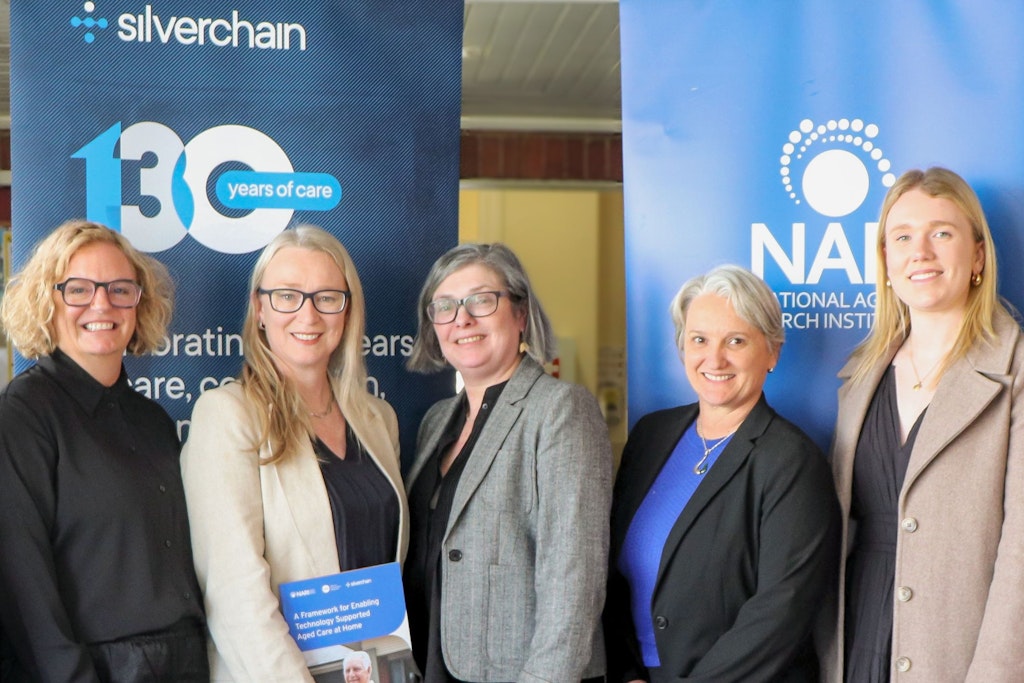Tech implementation framework offers home care providers practical help
Last updated on 3 September 2024

In-home aged care providers now have a brand new evidence-based framework to utilise for the adoption of digital technologies following the launch of the Framework for Enabling Technology Supported Aged Care at Home.
Key points
- The framework provides a practical step-by-step guide for in-home aged care providers on how best to implement digital technologies during everyday service delivery
- The Framework was developed in partnership with the National Ageing Research Institute (NARI) and home care provider Silverchain
- The pioneering work was facilitated by the NARI-led Melbourne Ageing Research Collaboration (MARC) and funded via the Aged Care Research and Industry Innovation Australia (ARIIA) grants program
Developed to address the lack of home-care-specific resources, the Framework focuses on the unique enablers and barriers to technology implementation. It focuses on all end users, including organisations, staff, clients and families and the common challenges faced when using technology in home settings.
The Assistant Minister for Health and Aged Care, Ged Kearney, appeared at the launch via video. She praised the innovative Framework, highlighting the importance of collaboration and its alignment with the Department of Health and Aged Care’s Data and Digital Strategy.
“I’d like to thank all of you for your commitment to making life better for older people in Australia. The framework you are launching and the collaboration that went into it is exactly what we want to see. It’s heartening to see different groups in the sector working together” she said.
“Your work on best practice implementation of health-related technology in home care settings perfectly aligns to our strategy and is representative of the kind of sector leadership that represents the best possible future for aged care,” she said.
Minister Kearney also touched on the upcoming aged care reform timeline during her video call.
“Embracing the possibilities that technology brings to improve home and residential aged care is an essential part of our work to reform the aged care system. But it’s far from the only part,” she continued.
“No discussion about reform can begin without addressing the elephant in the room and that is outstanding decisions of Government [about the] new Aged Care Act, Support at Home and the Aged Care Taskforce response.
“Noting the complex interactions between each of these reforms I want to assure you we are getting close and that we are at the point of final discussions with an announcement in the not too distant future.”
Framework offers practical solutions
Silverchain Director of Research Discovery, Dr Tanya Davison, echoed Minister Kearney’s respect for collaboration, stating that the Framework is the result of the power of collaboration.
She added that Silverchain has embraced digital technologies to not only assist frontline staff but to keep older Australians at home for longer.
“We have clear benefits for older people using technology. They can receive high quality, consistent care that’s convenient, care that enables more choice and autonomy,” she said.
“Technology means we can dedicate our staff, instead of paperwork and administration, to provide direct care, build relationships and offer support face to face.”

Dr Davison also said their research shows that older people are increasingly using technology at home in their everyday lives. However, a small cohort of older people and workers alike are still finding technology difficult to adapt to and that’s where support is most needed
“The research we’ve done has shown that older people are increasingly using technologies in their lives and the in-home aged care workforce is ready to try innovative new approaches. But simply making technology available isn’t enough for success,” Dr Davison said.
“We need to make sure the specific technologies selected and the ways we implement them are carefully designed. This includes consideration of the kinds of training and supports that are required.”
To help home care providers successfully implement new technologies, the framework incorporates seven main themes:
- Technology Design Factors and Features
- Privacy, Security and Trust
- Training and Technical Support
- Organisational Design and Culture
- Aspects of Client Care
- Digital Literacy
- Perceived Benefits of Technology
“This framework provides a guide for best-practice implementation of health-related technology, specifically for older people and the aged care workforce in home care settings across Australia, NARI Director of Clinical Gerontology, Associate Professor Frances Batchelor, added.
“It provides information on how to reduce barriers to implementing technology and leverage enablers to ensure quality of care. It also offers practical tips and a checklist of key considerations when developing a technology implementation plan.”
Suggestions include avoiding the use of technical jargon, identifying minimum competencies when recruiting and upskilling staff who need support, showing clients how technology can improve safety and involving end users in the consultation process when adopting new technology.
Associate Professor Batchelor said the Framework has not been designed for use in isolation as it complements other layers of decision-making and planning. She also urged providers to not let it sit on the shelf collecting dust as it can and should be a living document that is used, reassessed and improved over time.